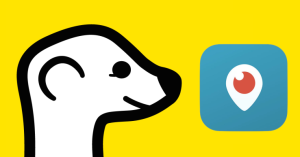I came across a really good blog last week titled “Why Aren’t More Radio Stations Being Social?” by Justin Kings who is an International media consultant, trainer and broadcaster. He is also, like me, a radio professional who bemoans the way in which broadcast organisations and broadcasters themselves use Social platforms. It reminded me of a blog I wrote last year called “Why Is Radio Still Underusing Twitter?”
It was interesting to read the comments that accompanied Justin’s blog on the Radio Today website because they spoke of the “lack of visible replies” and that they only get “regular contributors”. This implies it’s the fault of the platform when in fact, as always, it’s the quality and creativity of the content and the way it’s sold on the air.
Listeners to a radio station are there to be enticed and teased, to listen a little longer when they really should be doing something else, to force them to visit that web page, to give that video one more view, to send that text to add a few pence to the coffers. Good presenters along with entertaining and creative content can do all of that.
Does that seems familiar in any way?
That’s exactly what Social communication does too.
When I’m talking to businesses and organisations about how they use Social platforms I use strategies and principles from three decades as a successful radio presenter because the parallels are obvious and valid. After all we are talking about “live broadcasting” in the most part. Social communication like traditional radio broadcasts is sent out to an audience (community) but at the point of contact is 1-2-1 so it becomes a very personal medium.
This where Justin and I speak with one voice when we talk about how poorly radio in general uses these digital channels to accompany and enhance their output. You would think that if any business would understand 1-2-1 communication it would be radio.
I discovered Twitter in 2009 and grasped the opportunity to use it straight away. It was the first time I could talk to my audience outside of show times. I was able to strengthen the relationship I already had with them, share extra content with them, take them behind-the-scenes (listeners love that) and give them stuff they couldn’t get just by listening to my show. I could also make someone who wasn’t already listening tune in, that’s as powerful as it gets.
Former BBC 5 Live presenter Richard Bacon’s once described Twitter as being like “the DVD Extras of a radio programme”. That’s a perfect analogy.
Of course radio shouldn’t only use Social channels to get material for use on air, the marketing possibilities are many and varied. You can talk about today’s show, tease ahead for tomorrow, highlight news items, showcase station contests and promotions, take people behind-the-scenes, post links to the station website and other Social channels, give the listener those “DVD Extras” and importantly…..have fun.
There is another positive to be gained from regular monitoring and engagement with Social Media platforms and that is the ability to provide gold standard customer service. There is also one thing you can do which doesn’t take long but will strengthen your customer service reputation. Justin mentions it in his blog, an American marketer called Gary Vaynerchuck has written a book about it and I talk about regularly in my sessions.
Just say “Thank You”.
Two words that acknowledge you appreciate that tweet or post or picture and will validate the time and effort the listener has taken to create and send it.
Having said all of that there has to be the urge and motivation to do it. The radio stations who are gaining most from their Social Media platforms are the ones who have developed a strategy for content creation and monitoring. They are the ones who have recognised that Social communication is no longer something to do if someone has time to knock up a Facebook post or two. It’s now firmly part of any communications business portfolio.
Social Media platforms are perfect tools for building and maintaining relationships and trust with a community. The fact that the experts in 1-2-1 communication are, in many circumstances, using those tools in a very unimaginative, ad-hoc manner is baffling.


















